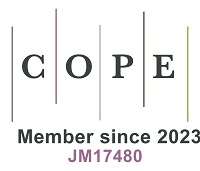REFERENCES
1. Bongaarts J. Global Warming of 1.5 °C. Switzerland: IPCC; 2019. pp. 251-2. Available from: https://ipcc.ch/sr15/ [Last accessed on 23 Jul 2024].
2. Heisel F, Mcgranahan J, Ferdinando J, Dogan T. High-resolution combined building stock and building energy modeling to evaluate whole-life carbon emissions and saving potentials at the building and urban scale. Resour Conserv Recy 2022;177:106000.
3. Song L, van Ewijk S, Masanet E, et al. China’s bulk material loops can be closed but deep decarbonization requires demand reduction. Nat Clim Chang 2023;13:1136-43.
4. Chen W, Yang S, Zhang X, Jordan ND, Huang J. Embodied energy and carbon emissions of building materials in China. Build Environ 2022;207:108434.
5. Zhang X, Li Y, Chen H, Yan X, Liu K. Characteristics of embodied carbon emissions for high-rise building construction: a statistical study on 403 residential buildings in China. Resour Conserv Recy 2023;198:107200.
6. Long Y, Li Z, Song Q, Cai K, Tan Q, Yang G. The dynamic stock-flow and driving force analysis of the building metal and non-metal resources at a city scale: an empirical study in Macao. Circ Econ 2022;1:100004.
7. Cheng C, Wen B. Historical evolution analysis of building steel stock in China: a case study of Yangtze River delta region. China Mining Magzine 2019;28:18-22. (in Chinese). Available from: https://kns.cnki.net/kcms2/article/abstract?v=yqeyU9EK6jQoNfNJSHBAnupB6VcfeqPx2FrI-hPfoJGZSLtQ8DMN2Ah1qsqSs59cHK_zSb6vYUgYzf_mAvOMQ7lmOTVxSVBrxL_qIXqQaWVwupJ2XWv8AAxdgESpdHLK_zAOYHjBrmuWWgwaEDpS8g==&uniplatform=NZKPT&language=CHS [Last accessed on 23 Jul 2024].
8. Li Y. Study on evolution of construction stock and its driving factors in Beijing. Beijing Uni Technol 2019. (in Chinese).
9. Liang H, Bian X, Dong L, Shen W, Chen SS, Wang Q. Mapping the evolution of building material stocks in three eastern coastal urban agglomerations of China. Resour Conserv Recy 2023;188:106651.
10. Zhang C, Hu M, Sprecher B, et al. Recycling potential in building energy renovation: a prospective study of the Dutch residential building stock up to 2050. J Clean Prod 2021;301:126835.
11. Liu Q, Liu L, Liu J, Li S, Bai H, Liu G. Estimation and driving force of steel stocks in Chongqing. Resour Sci 2018;40:15-24. (in Chinese). Available from: https://kns.cnki.net/kcms2/article/abstract?v=yqeyU9EK6jQ6fdkl6UER-tcT2unLTogEvvbwUGISgCocPFU_t39RV6lIhNLaay8NtwsD3umEQfeU4WidCY3ZtHDhOMk35rIRd0shtuBkMCEU0TB22zbenQZWXOcUQuyBT1pr8P9f0cb4tEZ-FZppuQ==&uniplatform=NZKPT&language=CHS [Last accessed on 23 Jul 2024].
12. Müller DB. Stock dynamics for forecasting material flows - case study for housing in the Netherlands. Ecol Econ 2006;59:142-56.
13. Long Y, Song Q, Huang B, Zeng X, Wu H. Characterizing temporal and spatial characteristics of urban building material metabolism and embodied carbon emissions through a 4D GIS-MFA-LCA model. Resour Conserv Recy 2024;206:107642.
14. Wang J, Wei J, Liu Z, Huang C, Du X. Life cycle assessment of building demolition waste based on building information modeling. Resour Conserv Recy 2022;178:106095.
15. Wiik MK, Fufa SM, Kristjansdottir T, Andresen I. Lessons learnt from embodied GHG emission calculations in zero emission buildings (ZEBs) from the Norwegian ZEB research centre. Energy Build 2018;165:25-34.
16. Bai J, Qu J, Maraseni TN, Wu J, Xu L, Fan Y. Spatial and temporal variations of embodied carbon emissions in China’s infrastructure. Sustainability 2019;11:749.
17. Shirazi A, Ashuri B. Embodied life cycle assessment (LCA) comparison of residential building retrofit measures in Atlanta. Build Environ 2020;171:106644.
18. Yan H, Shen Q, Fan LC, Wang Y, Zhang L. Greenhouse gas emissions in building construction: a case study of one Peking in Hong Kong. Build Environ 2010;45:949-55.
19. Wang X, Huang B, Wang Y, Liu J, Long Y, Daigo I. The impact of allocation methods on carbon benefits - a case study of construction waste recycling. Resour Conserv Recy 2023;199:107269.
20. Zhang N, Luo Z, Liu Y, Feng W, Zhou N, Yang L. Towards low-carbon cities through building-stock-level carbon emission analysis: a calculating and mapping method. Sustain Cities Soc 2022;78:103633.
21. Akbarnezhad A, Xiao J. Estimation and minimization of embodied carbon of buildings: a review. Buildings 2017;7:5.
22. Heilig GK. World urbanization prospects: the 2011 revision. Available from: https://www.un.org/en/development/desa/population/publications/pdf/urbanization/WUP2011_Report.pdf [Last accessed on 23 Jul 2024].
23. Hertwich E, Lifset R, Pauliuk S, et al. Resource efficiency and climate change. International Resource Panel (IRP) 2022. Available from: https://www.resourcepanel.org/sites/default/files/documents/document/media/resource_efficiency_and_climate_change_presentation_slides_main_report_implications_for_business_leaders.pdf [Last accessed on 25 Jul 2024].
24. Zhang YX, Luo HL, Wang C. Progress and trends of global carbon neutrality pledges. Adv Clim Chang Res 2021;17:88-97. (in Chinese).
25. Zhang Y. Situation and start-up thought of carbon peaking and carbon neutralization. Admin Reform 2021:77-85. (in Chinese).
26. Tian Y, Zuo S, Ju J, Dai S, Ren Y, Dou P. Local carbon emission zone construction in the highly urbanized regions: application of residential and transport CO2 emissions in Shanghai, China. Build Environ 2024;247:111007.
27. Shanghai Municipal Statistics Bureau. Shanghai statistical yearbook 1996-2022. Shanghai: China Statistical Press; 2022. (in Chinese). Available from: https://www.stats.gov.cn/sj/ndsj/ [Last accessed on 23 Jul 2024].
28. Riahi K, van Vuuren DP, Kriegler E, et al. The shared socioeconomic pathways and their energy, land use, and greenhouse gas emissions implications: an overview. Global Environ Chang 2017;42:153-68.
29. Zhong X, Hu M, Deetman S, et al. Global greenhouse gas emissions from residential and commercial building materials and mitigation strategies to 2060. Nat Commun 2021;12:6126.
30. Chen Y, Guo F, Wang J, et al. Provincial and gridded population projection for China under shared socioeconomic pathways from 2010 to 2100. Sci Data 2020;7:83.
31. Sarkar S, Chamberlain JF, Miller SA. A comparison of two methods to conduct material flow analysis on waste tires in a small island developing state. J Ind Ecol 2011;15:300-14.
32. Hashimoto S, Tanikawa H, Moriguchi Y. Where will large amounts of materials accumulated within the economy go? Waste Manag 2007;27:1725-38.
33. Liu M, Meng J, Liu B. Research progress on domestic and international carbon emission accounting methods. Trop Geogr 2014;34:248-58. (in Chinese).
34. Hao Q, Huang M, Bao G. Overview and comparative study of carbon emission accounting methods. Chin J Environ Manag ;2011:51-5. (in Chinese).
35. Riahi K, van Vuuren DP, Kriegler E, et al. The shared socioeconomic pathways and their energy, land use, and greenhouse gas emissions implications: an overview. Glob Environ Chang 2017;42:153-68.
36. Building construction manual. Beijing: China Building Industry Press; 2007. (in Chinese). Available from: https://thinker.cnki.net/bookstore/book/bookdetail?bookcode=9787801778963001&type=book [Last accessed on 23 Jul 2024].
37. National bureau of statistics of the People’s Republic of China, 1996-2022. (in Chinese). Available from: https://www.stats.gov.cn/sj/ndsj/ [Last accessed on 23 Jul 2024].
38. Ma L, Jiang Q, Zhao C. Research on the environmental coordination evaluation index system of green building materials based on LCA. China Build Mater Sci Technol 2010:90-5. (in Chinese). Available from: https://kns.cnki.net/kcms2/article/abstract?v=yqeyU9EK6jRYwjU3hiNKxnomYQveluYa_82ZN-t2nZWe-uVgIO2PueJeslDxsOSULHFFPp1NASXYEC1mXpkeGCqe1epldXpdDoBcJHhHWM5jMcAo1FlZyZnW99-BNyCc&uniplatform=NZKPT&language=CHS [Last accessed on 23 Jul 2024].
39. Standard for building carbon emission calculation GB/T 51366-2019S 2019. (in Chinese). Available from: https://baijiahao.baidu.com/s?id=1773260438801045556&wfr=spider&for=pc [Last accessed on 23 Jul 2024].
40. Xu X, Huang B, Liu L, et al. Modernizing cement manufacturing in China leads to substantial environmental gains. Commun Earth Environ 2022;3:276.
41. Watari T, Cao Z, Hata S, Nansai K. Efficient use of cement and concrete to reduce reliance on supply-side technologies for net-zero emissions. Nat Commun 2022;13:4158.








